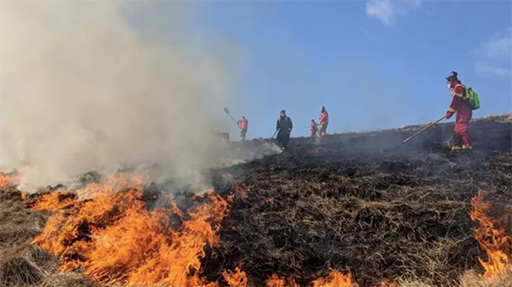3.3 Stephen Pyne: wildfire as entanglement
In his academic writing, Pyne has specifically approached fire as an entanglement of three interrelated processes: physical, ecological, and human. Below is a description of these processes and how they practically contribute to the development of wildfires.
Physical processes
Fire is a chemical reaction moulded by the physical characteristics of its environment. Those physical parameters shape the area burning at any one time (the zone of combustion) as it moves about the landscape. Abundant fuel material and hot, dry weather patterns that make these fuels more flammable make wildfires more likely. Therefore, a significant factor in the increase of wildfires is climate change and its effect on fuels.
Ecological processes
A fire’s environment is primarily organic as the living world provides the fuel for fire’s chemical processes. Where there is no organic material as carbon-based fuel, fire does not exist. Where there is a lot of organic matter, the risk of wildfires is increased. Fire’s ability to adapt to different circumstances means that it can smoulder in the debris close to the ground, race across open scrubland, or burn fiercely through dense wooded areas. The increasing threat of wildfires is partly the result of disrupted ecosystems, neglected forests, abandoned fields, invasive highly combustible plants, and the collapse of internal checks-and-balances within ecosystems.
Human processes
Humans increasingly control and influence where fires happen and what type of fuel is chosen to be burned. The story of fire on Earth is ever more the story of what people do or don’t do, directly or indirectly, with fire and its setting.
An area can be at high risk of wildfires as the result of a whole range of human actions. Identifying entanglements shows how factors that seem unrelated to fire such as property laws or rural depopulation can have profound effects on the nature, location, and extent of fire. Thinking in terms of entanglements encourages thinking which is alive to those influences that are hidden and difficult to trace, as well as those that are clear and obvious.
Therefore, human decisions about land use, institutional behaviours, political policies, social changes, individuals’ and communities’ perceptions and motivations, and the resulting human actions and inactions can all contribute to allowing fire the space and time to develop out of control (adapted from Pyne, 2012).
By thinking about fires as a set of three entangled processes, Pyne highlights the interrelationships and dependencies that make wildfires the product of environment-society entanglements rather than just an act of nature or the consequences of human action. The next page will demonstrate how this theory can be specifically applied to the 2007 wildfires in Greece.

